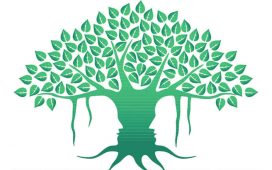Two, nirgun mantras have no form or attribute and are based on the formless Divine. Examples are ‘Aum’ and ‘Soham – I am He’. Three, Bij, or seed mantras, are single-syllable sounds whose verbal meaning is not available to us without initiation. They work through the power and energy of sound-vibrations and closely relate to our chakras, energy centres, within the body.
Japa also takes three forms: chanted aloud, whispered in a low voice, or uttered in the silence the heart within. Whichever form of jap we practise, the benefits we reap will be many: peace of mind, tranquillity, increased concentration, positive energy levels and freedom from fear and anxiety.
Mantras are for all of us, not just for abhyasis and sadhaks. As we become habituated to jap, it becomes a natural part of our life, that it is no longer a restricted or exclusive activity. Therefore, I often ask my friends, ‘If, while praying, we can think of worldly matters, why can’t we think of God when we are attending to worldly matters?’









